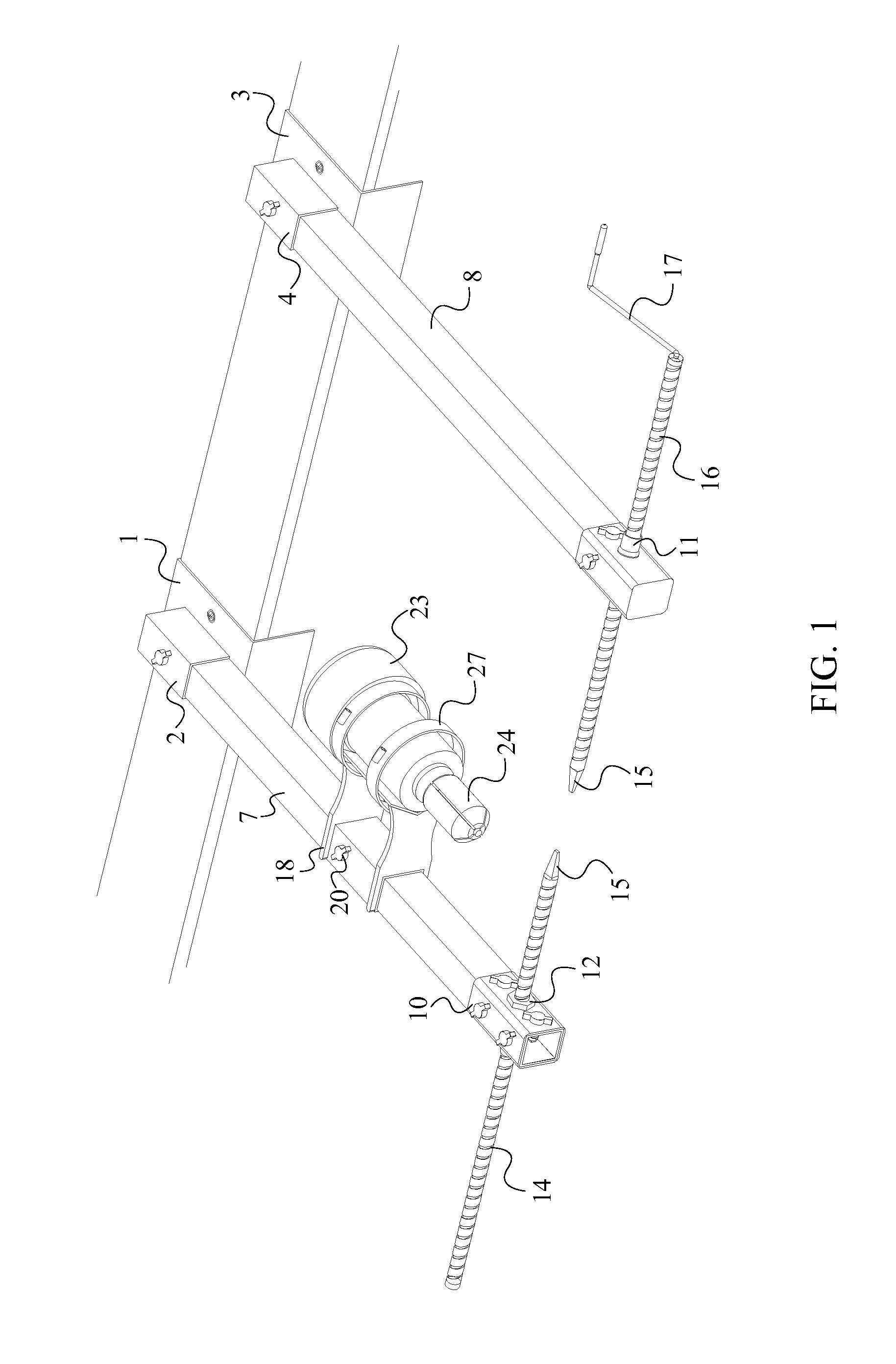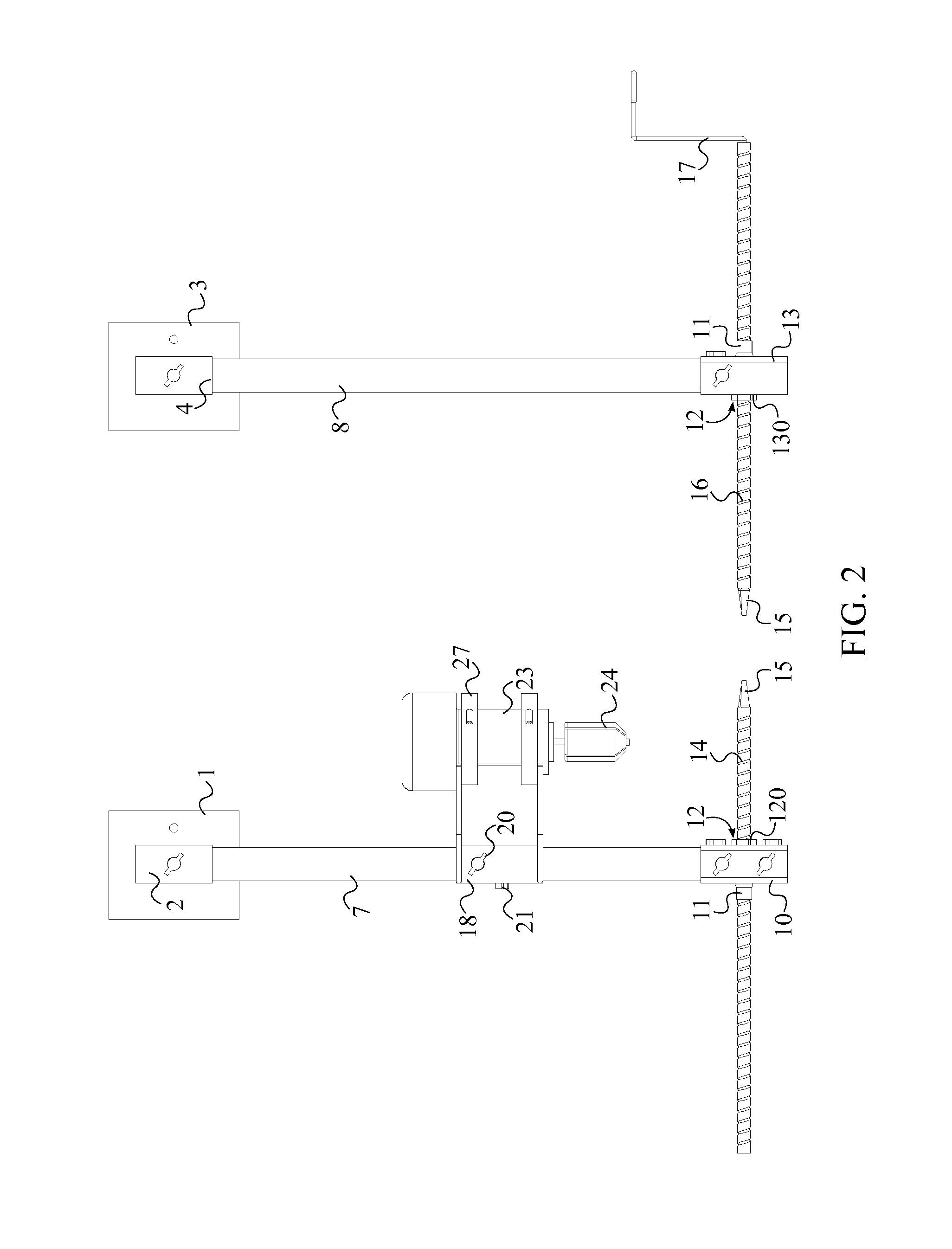Router Jig for Producing Tenons
a tenon and router technology, applied in the field of wood furniture creation, can solve the problems of time-consuming and labor-intensive cutting of tenons on logs with a larger diameter, limited range is especially problematic, and the use of hand saws can be stressful
- Summary
- Abstract
- Description
- Claims
- Application Information
AI Technical Summary
Benefits of technology
Problems solved by technology
Method used
Image
Examples
Embodiment Construction
[0019]All illustrations of the drawings are for the purpose of describing selected versions of the present invention and are not intended to limit the scope of the present invention.
[0020]The present invention is an apparatus that can be used to cut straight tenons on logs that can vary in length, diameter, and shape. The present invention comprises a first bench mounting bracket 1, a first motor mounting bracket 18, a first motor 23, a first arm 7, a first threaded rod 14, a first rod holder 10, and a first router bit 24. As seen in FIG. 1, the first bench mounting bracket 1 is utilized to attach the present invention to an external platform such that the present invention remains steady during the tenon cutting process. The log in which a tenon is intended to be cut on, is placed adjacent to the first threaded rod 14 such that a tenon can be cut by utilizing the first router bit 24 connected to the first motor 23.
[0021]The present invention comprises a first configuration, a secon...
PUM
 Login to View More
Login to View More Abstract
Description
Claims
Application Information
 Login to View More
Login to View More - R&D
- Intellectual Property
- Life Sciences
- Materials
- Tech Scout
- Unparalleled Data Quality
- Higher Quality Content
- 60% Fewer Hallucinations
Browse by: Latest US Patents, China's latest patents, Technical Efficacy Thesaurus, Application Domain, Technology Topic, Popular Technical Reports.
© 2025 PatSnap. All rights reserved.Legal|Privacy policy|Modern Slavery Act Transparency Statement|Sitemap|About US| Contact US: help@patsnap.com



